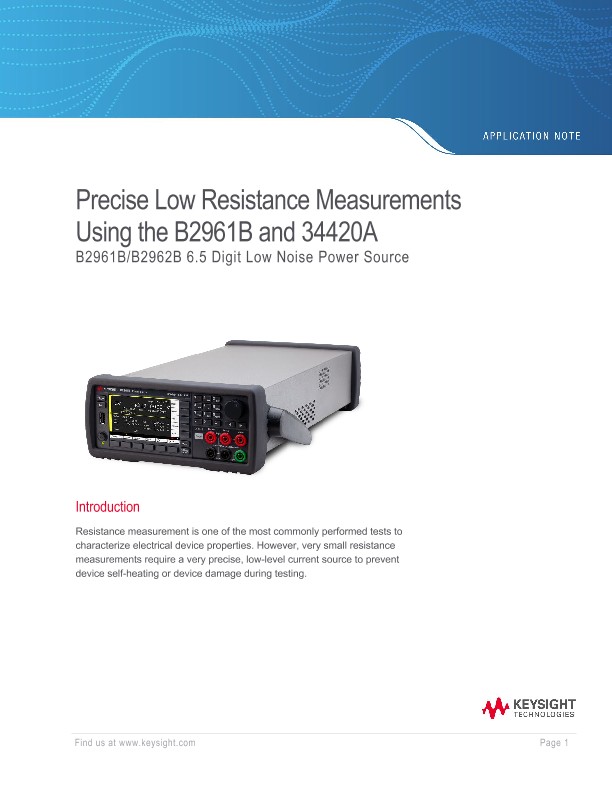
Precise Low Resistance Measurements Using the B2961B and 34420A
Application Notes
Resistance measurement is one of the most commonly performed tests to characterize electrical device properties. However, very small resistance measurements require a very precise, low-level current source to prevent device self-heating or device damage during testing.
There are many factors that need to be considered when making precise low resistance measurements:
• The 4-wire (Kelvin) measurement technique must be used to remove lead and contact resistance.
• A current source and a voltage meter with both low noise and high accuracy are required.
• Test currents must be large enough to generate sufficient voltage drop across the test resistance such that it is measurable within the test equipment’s resolution limits.
• Self-heating effects caused by power dissipation need to be minimized.
• Special measurement technique must be used to eliminate offset currents (zeroing) and to reduce the thermal electromotive force (EMF) by alternating the current direction.
• The current source and the voltage meter must be synchronized to avoid measurement error caused by source settling time.